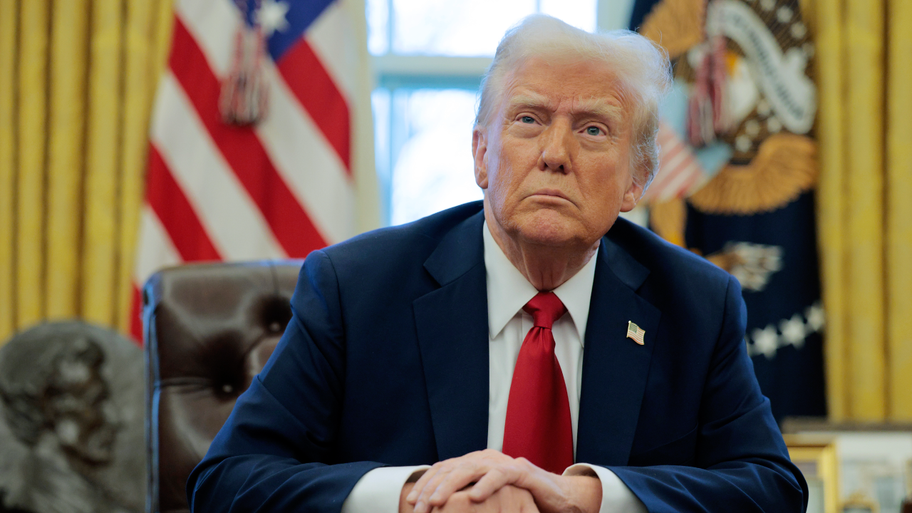Understanding the Impact of Tariffs on the U.S. Economy: A Comprehensive Analysis
Tariffs have become a hot topic in recent years, especially as the global economy shifts and evolves. They can shape industries, influence prices, and even impact our daily lives. Understanding the intricate web of tariffs is crucial for anyone wanting to grasp the current state of the U.S. economy.
As trade policies change and tensions rise between nations, it's essential to examine how these measures affect not just businesses but also consumers like you and me. This comprehensive analysis will delve into the complex world of tariffs—what they are, how they work, their historical context, and their lasting effects on American society. Join us as we unravel this vital economic issue that touches every corner of our nation’s financial landscape!
Understanding the Impact of Tariffs on the U.S. Economy: A Comprehensive Analysis
Tariffs are taxes imposed on imported goods, designed to protect domestic industries by making foreign products more expensive. This shift can lead to higher prices for consumers and alter purchasing habits across the country.
The impact of tariffs extends beyond immediate financial implications. They can disrupt supply chains, influence market competition, and even provoke retaliatory measures from trading partners. Understanding these dynamics is key to grasping how tariffs shape not only our economy but also our relationships with countries around the globe.
Introduction to Tariffs
Tariffs are taxes imposed by a government on imported goods. They serve as a tool to regulate international trade, aiming to protect domestic industries from foreign competition. By increasing the cost of imports, tariffs can make locally produced products more appealing to consumers.
While tariffs may help specific sectors thrive, they often come with broader economic consequences. Understanding their complexity is vital for grasping how they influence markets and consumer behavior in the U.S. economy today.
How Tariffs Work
Tariffs are taxes imposed on imported goods, designed to make foreign products more expensive. This encourages consumers to buy domestically produced items instead. Governments set tariff rates based on trade policies and political strategies.
When tariffs increase, the cost of imports rises. Companies might pass these costs onto consumers through higher prices. Conversely, lower tariffs can stimulate importation and competition, benefiting customers with a wider range of choices at reduced prices. The dynamics of tariffs play a significant role in shaping market behaviors and economic landscapes.
Impact of Tariffs on U.S. Consumers
Tariffs significantly influence U.S. consumers by raising prices on imported goods. When the government imposes tariffs, manufacturers often pass those costs onto buyers. This means everyday items can become more expensive.
Additionally, limited competition may result from these trade barriers, further driving up prices. Consumers might find fewer choices available as foreign products are priced out of the market. The overall impact is felt at checkout counters across the country, affecting household budgets and purchasing power directly.
Trump Administration's Tariff Policies and Their Economic Effects
Under the Trump administration, tariffs became a cornerstone of trade policy. The imposition of tariffs on steel, aluminum, and various goods from China aimed to protect American industries. This aggressive approach sought to reduce the trade deficit and encourage domestic production.
However, these policies led to mixed economic effects. While some sectors thrived under protectionist measures, many consumers faced higher prices. Moreover, retaliatory tariffs from trading partners strained relationships and created uncertainty in the marketplace, impacting both businesses and consumers alike.
Historical Precedents and Outcomes of Tariffs
Throughout history, tariffs have played a crucial role in shaping the U.S. economy. The Tariff Act of 1789 was one of the first measures to generate government revenue and protect emerging industries. It set a precedent for future tariff policies aimed at balancing trade deficits.
In subsequent decades, various tariff acts sparked economic debates and even conflicts, such as the Civil War-era tariffs that intensified regional tensions. These historical examples illustrate how tariffs can influence not only economics but also social and political dynamics within the country.
Tariffs and U.
S. Relationships with Trade Partners
Tariffs can strain relationships between the U.S. and its trade partners. When one country imposes tariffs, it often leads to retaliatory measures. This back-and-forth can escalate tensions, impacting diplomatic relations.
Countries affected by tariffs may seek alternative markets or form new alliances. As a result, long-standing partnerships could weaken over time. The interconnectedness of global economies means that these shifts in trade dynamics ripple beyond borders, influencing international cooperation and economic stability across regions.
Trump Tariffs and the Economic Impact
The Trump administration implemented tariffs on various imports, aiming to protect American industries. This move sparked significant debates about its effectiveness and long-term consequences for the economy.
Many businesses faced increased costs as they sourced materials globally, passing these expenses onto consumers. While some domestic sectors benefited from reduced foreign competition, others struggled under the weight of higher prices and disrupted supply chains. The economic impact remains a complex interplay of winners and losers within the U.S. market landscape.
Effect on Employment
Tariffs can create a paradox in the job market. While some industries, particularly manufacturing, may experience a temporary boost due to reduced foreign competition, other sectors often suffer. Retailers and businesses reliant on imported goods face higher costs, leading to potential layoffs.
Workers in affected sectors might find themselves displaced as companies adjust to increased expenses. This dynamic complicates the overall employment landscape, highlighting that tariffs do not uniformly benefit all workers or industries across the economy. The effects are varied and complex.
Potential Economic Slowdown
The potential economic slowdown linked to tariffs raises concerns among analysts and consumers alike. As costs for imported goods rise, companies may face tighter profit margins. This could lead to reduced investments in growth or even layoffs.
Consumers might also tighten their belts due to higher prices on everyday products. With decreased spending power, the ripple effect can stifle both local businesses and overall economic activity. The delicate balance between protecting industries and fostering a healthy economy remains a critical challenge for policymakers.
Cultural and Political Impact on Americans
The impact of tariffs on the U.S. economy extends beyond mere numbers and statistics. They shape cultural narratives, influencing how Americans perceive their identity in a globalized world. Many citizens feel a sense of nationalism, rallying around domestic industries while fostering skepticism toward foreign products.
Politically, tariffs have sparked heated debates about economic strategy and fairness. They often deepen divisions among political parties, with differing views on protectionism versus free trade shaping policy agendas. This ongoing discourse influences voter sentiment and overall civic engagement across the nation.
Trump Tariffs vs. Alternatives for Boosting U.S. Competitiveness
Trump's tariffs aimed to protect American industries by making foreign goods more expensive. While this approach sought to revive domestic production, critics argue it often leads to higher prices for consumers and strained relationships with trade partners.
Alternatives like investing in workforce development and innovation could enhance U.S. competitiveness without the downsides of tariffs. By fostering skills and encouraging entrepreneurship, the nation may build a stronger foundation for sustainable economic growth while maintaining healthy global trade relations.
Analysis of Tariff Reports and Their Impact on U.S. Economy
The analysis of tariff reports reveals a complex landscape regarding the impact of tariffs on the U.S. economy. Data shows that while some industries might benefit from protective measures, consumers often face higher prices and limited choices. Reports indicate mixed outcomes in employment rates across sectors, with manufacturing sometimes seeing boosts but service-oriented jobs facing challenges.
Economic models suggest that long-term reliance on tariffs could hinder innovation and competitiveness. The interdependence of global supply chains means that shifts in trade policy affect not just domestic markets but international relations too. As policymakers assess these impacts, understanding both short-term gains and potential long-term consequences is crucial for shaping future trade strategies that truly benefit the U.S. economy as a whole.











.png)

 English (CA) ·
English (CA) ·  English (US) ·
English (US) ·  Spanish (MX) ·
Spanish (MX) ·